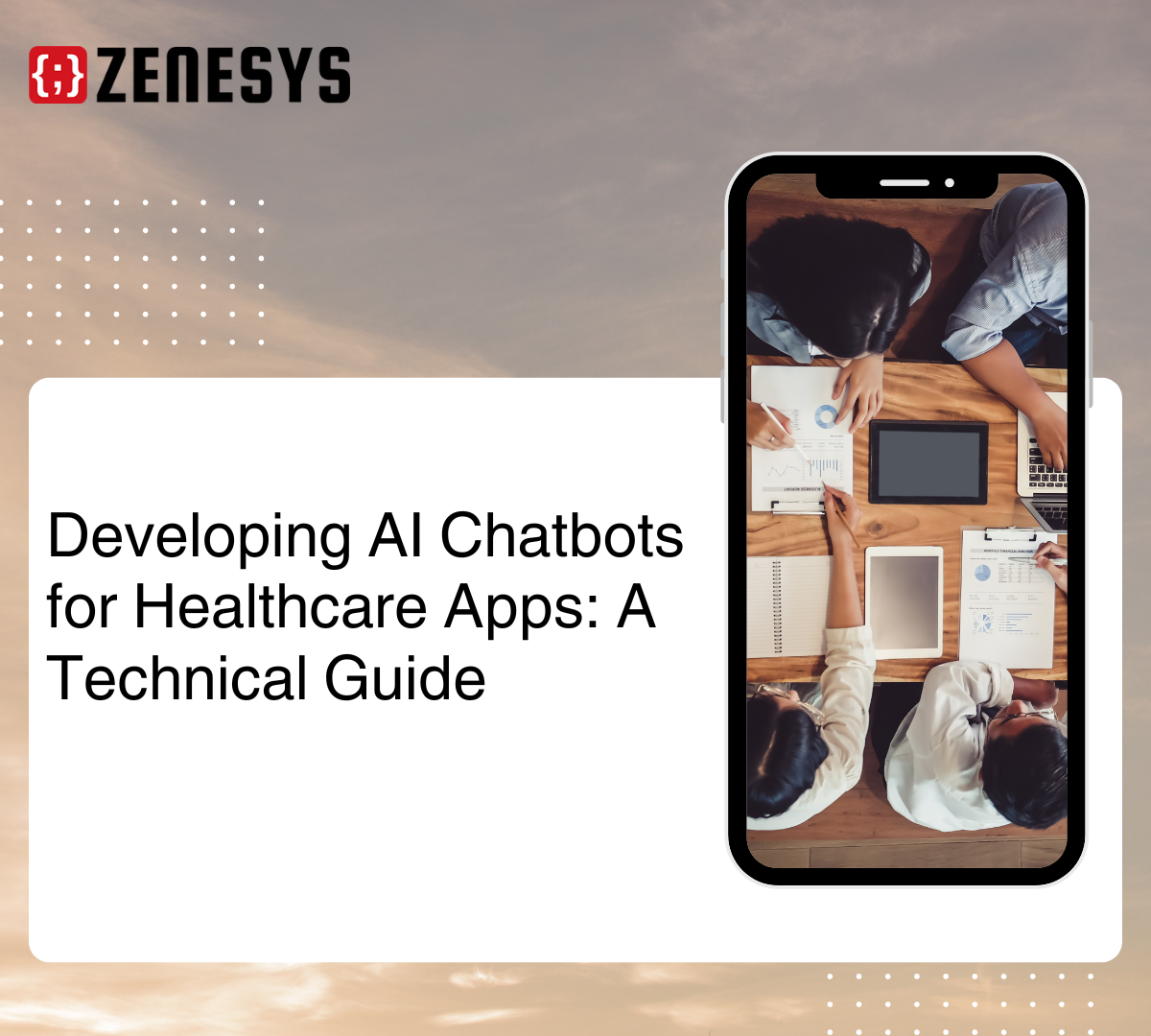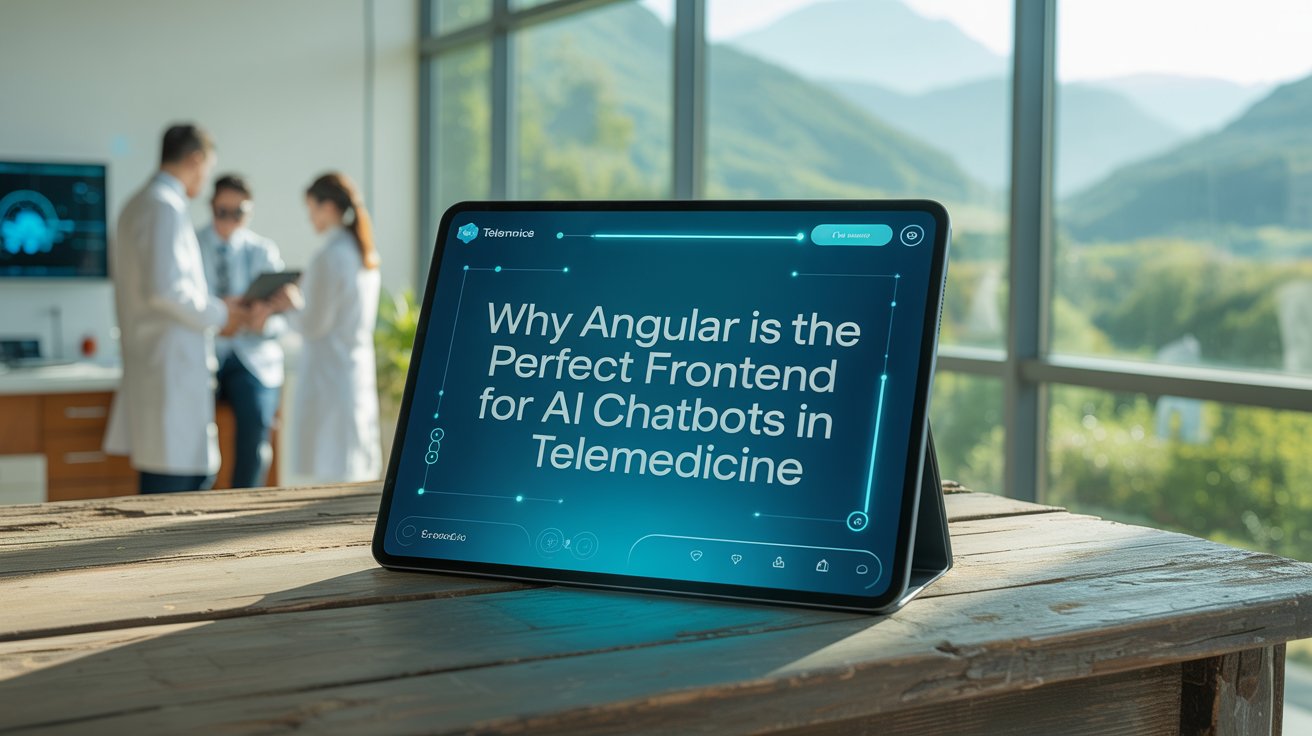Developing AI Chatbots for Healthcare Apps: A Technical Guide

Strong 8k brings an ultra-HD IPTV experience to your living room and your pocket.
AI chatbots are transforming the healthcare industry. From answering basic health queries to supporting patient monitoring, these bots are fast becoming an integral part of modern healthcare apps. The shift is backed by numbers. A 2023 report from Grand View Research shows that the global healthcare chatbot market is expected to grow at a compound annual growth rate (CAGR) of 20.3% through 2030. Clearly, the interest is not just academic—it’s practical.
✍️ In industries like healthcare, speed and accuracy matter. Learn how AI chatbot systems are helping patients book appointments, check symptoms, and receive guidance without waiting for human intervention.
Let’s explore what goes into building AI chatbots for healthcare apps, peeling back the layers to reveal the nuances of technology, ethics, and usability.
The Foundation: Why AI Chatbots in Healthcare?
Healthcare is complex. Patients want quick answers, but providers are often stretched thin. Enter AI chatbots. These digital assistants can answer common questions, schedule appointments, send reminders, and even offer mental health support. For example, Woebot, a mental health chatbot, provides cognitive behavioral therapy (CBT) techniques to users.
From my experience, the demand stems from a combination of factors: the rise of telemedicine, the growing need for personalized healthcare, and an emphasis on efficiency. But success hinges on more than just algorithms. Building a functional healthcare chatbot requires a thoughtful mix of cutting-edge technology and user-centric design.
Key Components of AI Chatbots for Healthcare Apps
1. Natural Language Processing (NLP)
NLP is the backbone of any AI chatbot. It helps the bot understand user queries, process them, and respond appropriately. A chatbot’s ability to “talk” like a human depends heavily on the sophistication of its NLP.
Take Google’s BERT or OpenAI’s GPT models—they’re popular choices for chatbot development. However, integrating NLP into healthcare comes with challenges. Medical jargon is complex, and misunderstandings can lead to dire consequences. Training the chatbot on datasets specific to healthcare ensures it can interpret phrases like “persistent fatigue” or “shortness of breath” correctly.
2. Integration with Health Data
To make a chatbot truly useful, it should connect to electronic health records (EHRs) or wearable devices. For instance, a diabetes management bot could analyze blood sugar data from a patient’s device and provide tailored advice. Compliance with standards like HL7 or FHIR is crucial for smooth data exchange.
But integration isn’t just about technical connections. Privacy laws such as HIPAA in the U.S. and GDPR in Europe require strict data handling protocols. These regulations ensure patient confidentiality is never compromised.
3. Conversational Design
A chatbot’s success often hinges on how natural its interactions feel. Have you ever been frustrated by a bot that couldn’t understand what you were saying? That’s a design problem.
Conversational design involves creating a flow that mirrors human conversations. This requires mapping common patient scenarios—booking a check-up, asking about symptoms, or getting lab results—and ensuring the bot can handle these smoothly. For a healthcare chatbot, this step is especially critical because patients might already be anxious or frustrated.
4. AI Models for Diagnosis Support
Some advanced bots are designed to assist in diagnosis. Babylon Health’s chatbot, for instance, evaluates symptoms and provides possible conditions. While not a replacement for doctors, such bots can offer preliminary assessments, ensuring patients seek timely care.
Building these requires sophisticated AI models trained on vast medical datasets. However, developers must tread carefully—false positives or negatives can have serious repercussions.
Addressing Ethical and Technical Challenges
1. Bias in AI
AI models are only as good as the data they’re trained on. If the training data lacks diversity—be it in terms of geography, gender, or age—the bot’s responses might reflect biases. For example, some studies have found that AI tools are less accurate in diagnosing skin conditions in darker-skinned individuals. Recognizing and addressing these biases is non-negotiable.
2. Data Security and Compliance
Patients trust healthcare apps with sensitive information. Failing to protect this data isn’t just a legal issue—it’s a moral one. Developers must ensure encrypted communication channels, secure storage, and periodic audits.
In my experience, many development teams underestimate the importance of staying up-to-date with regulations. Building compliance into the development process from the start saves headaches down the line.
3. Building Trust
Would you trust medical advice from a chatbot? Many patients remain skeptical. Transparent communication is key. The bot should clarify its role—“I can provide general guidance, but I’m not a substitute for a doctor.” Including clear disclaimers can help manage expectations.
The Development Process: A Practical Roadmap
Requirement Analysis: Understand the target audience. Are you building for chronic disease management, mental health support, or general queries?
Technology Selection: Choose the right tools. NLP engines, cloud platforms, and integration frameworks should align with your needs.
Prototype and Testing: Build a minimal viable product (MVP) and test extensively. Real-world testing helps identify gaps early.
Iterate Based on Feedback: Patient feedback is invaluable. Use it to fine-tune the bot’s performance.
Deployment and Maintenance: Once live, continuously monitor the chatbot. AI models need regular updates to stay effective.
A Quick Word on Team Collaboration
Building an AI chatbot isn’t a one-person job. It’s a collaborative effort involving AI specialists, healthcare professionals, UX designers, and compliance experts. Each perspective ensures the final product is robust, user-friendly, and safe.
Real-World Examples and Resources
Several companies have made strides in this space. Ada Health’s AI-powered symptom checker, for instance, is used globally. Meanwhile, healthcare providers like the Mayo Clinic are exploring chatbot integrations to enhance patient engagement.
If you’re considering developing a healthcare app with chatbot functionality, Zenesys offers end-to-end healthcare app development solutions. They can guide you through the entire process, ensuring your app is both innovative and compliant.
Note: If you want to know about Zenesys Healthcare CRM Software Development Services. then click the link.
Conclusion
AI chatbots are reshaping healthcare, one conversation at a time. While the road to building a reliable bot is filled with challenges, the rewards—better access, improved efficiency, and patient satisfaction—make it worth the effort. With the right approach and a clear focus on ethics and usability, developers can build tools that genuinely make a difference.
Note: IndiBlogHub features both user-submitted and editorial content. We do not verify third-party contributions. Read our Disclaimer and Privacy Policyfor details.






